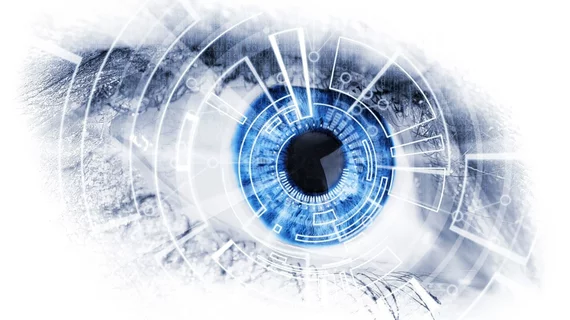Teleophthalmology incorporating AI has a bright future in advanced vision care, and the potential indications branch out in many directions from screening for diabetic retinopathy (which is already one of the best-established use cases in all of medical AI).
That’s the conclusion of researchers in Greece who reviewed the clinical literature, found 321 relevant articles and focused on 103 studies for close analysis. Their report is running in Cureus.
Ophthalmologist Konstantinos Tsaousis, MD, PhD, of Volos General Hospital and ophthalmology trainee Anna Nikolaidou of Aristotle University of Thessaloniki point to the lift telemedicine as a whole has received during the public health crisis caused by the rise and spread of SARS-CoV-2.
For ophthalmology, they suggest, the timing will prove something of a silver lining in the middle of the widespread devastation.
“The spectrum of eye diseases that could benefit from teleophthalmology is wide, including mostly retinal diseases such as diabetic retinopathy, retinopathy of prematurity, age-related macular degeneration but also glaucoma and anterior segment conditions,” they write. “Simultaneously, artificial intelligence provides ways of implementing teleophthalmology easier and with better outcomes, contributing as significant changing factors for ophthalmology practice after the COVID-19 pandemic.”
The authors list some 11 clinical subfields for which AI teleophthalmology is poised for growth, along with advantages offered by each of 12 applications.
Five examples:
- Posterior segment pathology: Portable ophthalmic camera system powered by an iOS handheld mobile device. Advantage: Timely referral
- Anterior segment pathology: Smartphone-assisted anterior segment photography with +10 macro diopter lens. Advantages: Management of anterior segment conditions; bridging the distance gap for rural areas; cataract timely diagnosis
- General retinal pathologies: Portable fundus cameras and smartphone-based fundus imaging systems. Advantage: Addressing preventive blindness (screening, monitoring)
- Pediatric eye pathologies: “GoCheck Kids” mobile app; video recordings. Advantages: Evaluation of visual acuity; diagnosis of pediatric amblyopia and eye disease
- Glaucoma/high intraocular pressure: Smartphone-based, head-mounted perimeter for detection of visual field defects. Advantages: Self-monitoring of intraocular pressure; facilitation of early detection of visual field defects
“The combination of AI and teleophthalmology is likely to be revolutionary for ophthalmology when it is accurately integrated into ophthalmological practice,” Tsaousis and Nikolaidou write.
Noting that COVID-19 may be around for a while, they suggest there’s no time like the present for ophthalmology practices to adopt new approaches.
More:
Teleophthalmology addresses several eye pathologies that otherwise could be overlooked, diagnosed late or incorrectly managed. Teleophthalmological devices and programs are being implemented and researched widely and have been demonstrating positive results. With the contribution of AI to teleophthalmological approaches studies are showing that this could be the future for ophthalmological practice.”
The paper is available in full for free.
> Recent and related: Retinopathy screening a canary in the coal mine of AI-enabled nonspecialist care

